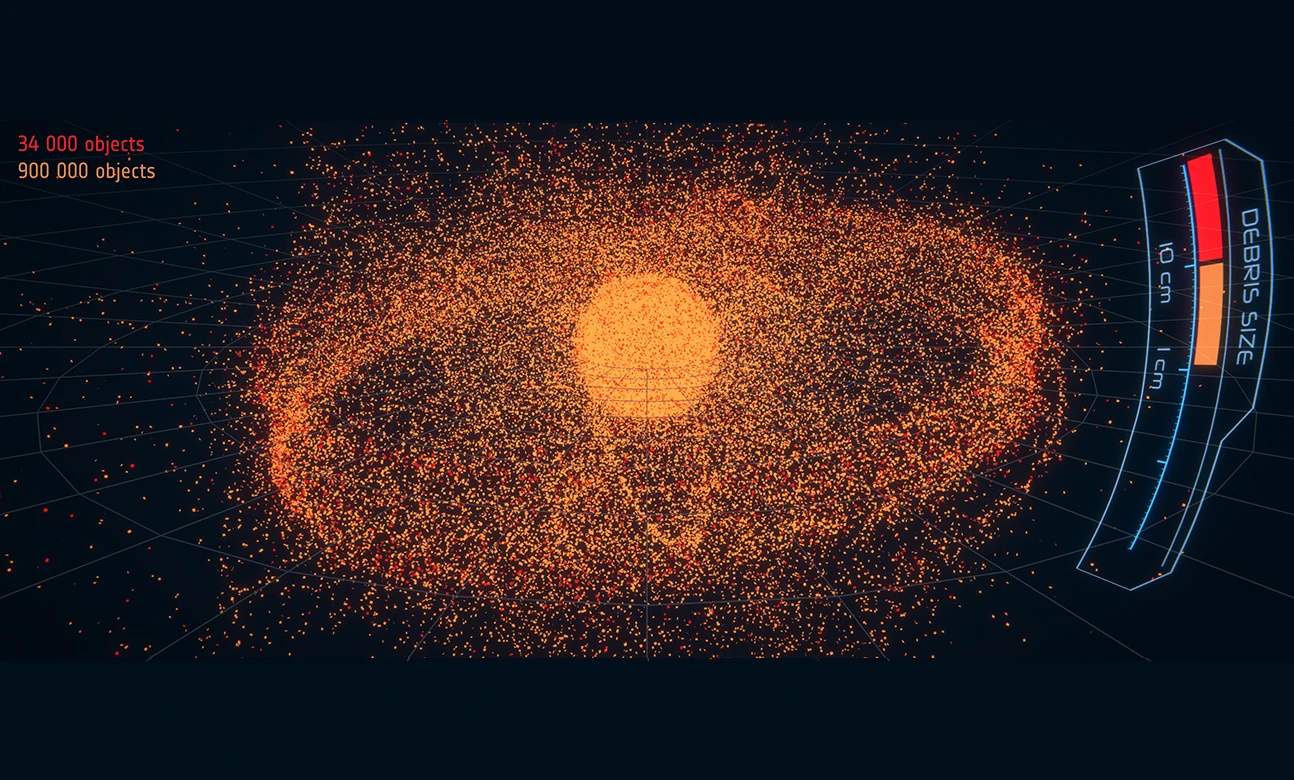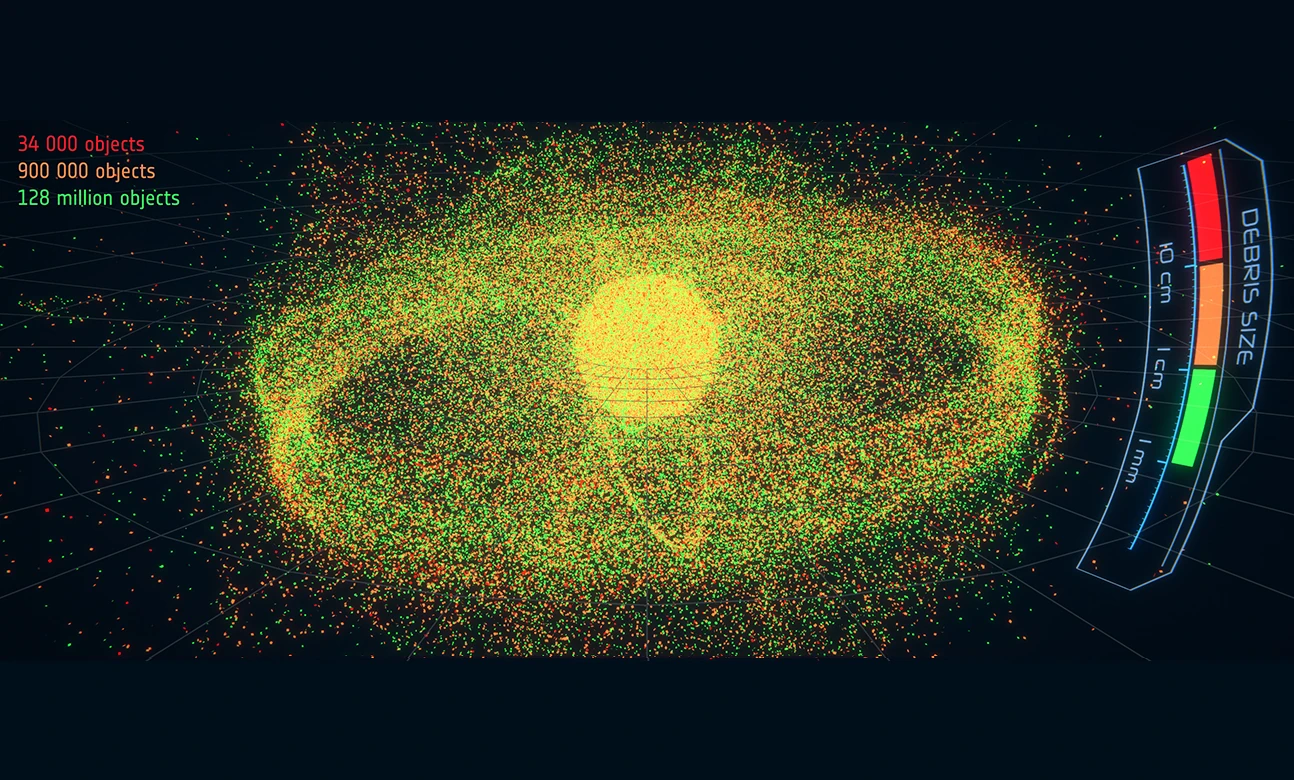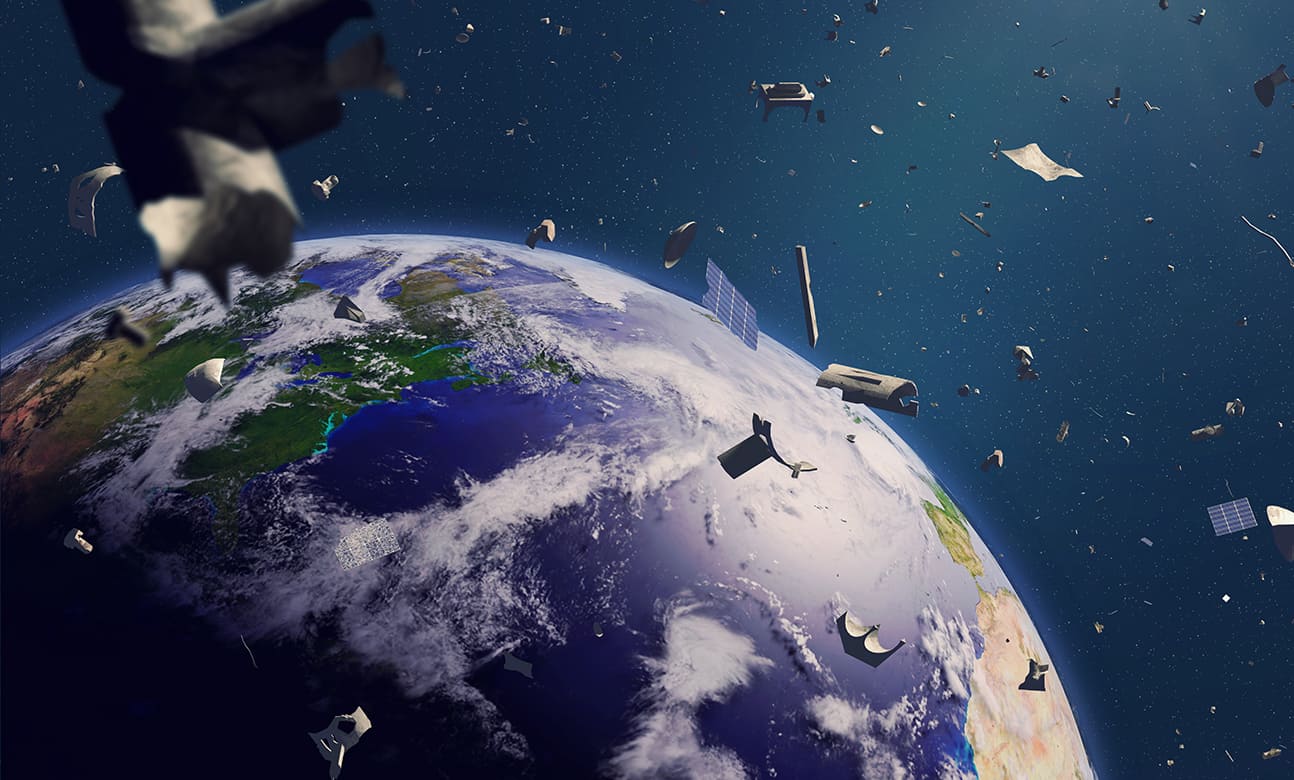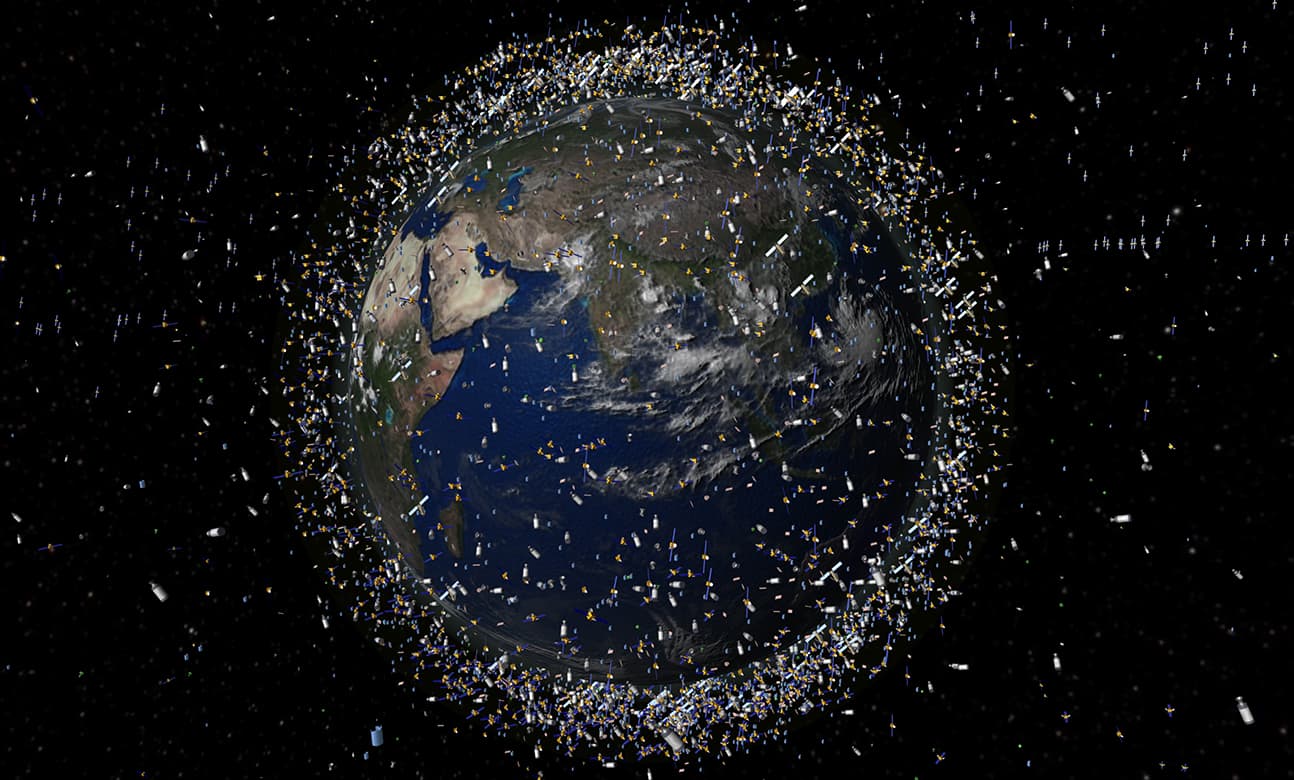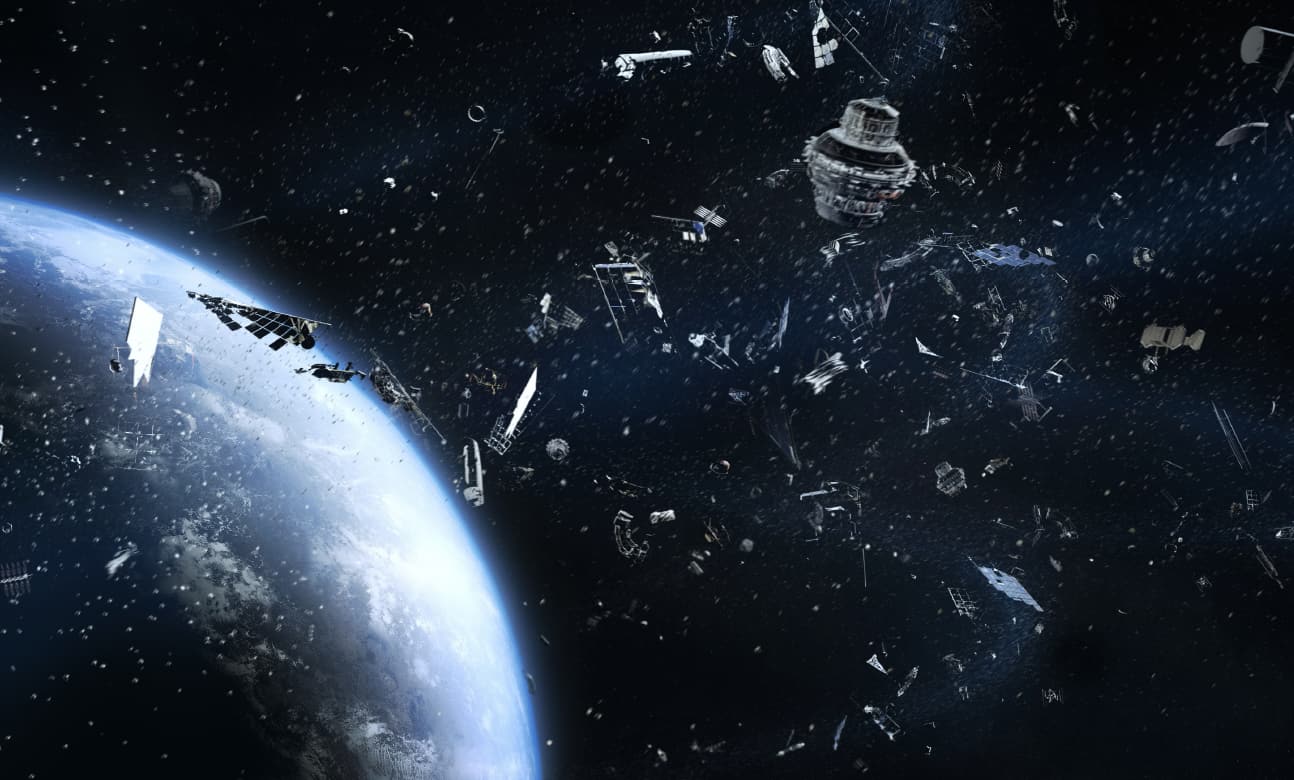Space Debris and Clean Space
Since the launch of Sputnik on 4 October 1957, over 6000 launches have placed over 12 000 satellites into orbit.
The Space Debris Office at ESOC keeps an updated list of exactly how many satellites are currently in operation, and how many are no longer functioning. While scientific applications were for a long time the dominant users of satellites, commercial applications have recently surpassed them.
Space debris comprises the ever-increasing amount of inactive space hardware in orbit around the Earth as well as fragments of spacecraft that have broken up, exploded or otherwise become abandoned.
The debris field comprises burnt-out launch vehicle upper stages, dead or inactive spacecraft and other objects ranging in size from as big as an automobile to microscopic dust. To avoid damage to operational satellites, ESA uses a range of tools and information services to track and assess space debris.
The Agency has taken space debris seriously since the 1980s. In 1986, the Director General created a Space Debris Working Group with the mandate to assess the various issues of space debris. The Space Debris Office at ESOC was formed in 2006 and, since 2009, space debris has been included in core ESA programmes, all based primarily at ESOC.
ESA’s Clean Space initiative, launched in 2012, seeks to mature technologies to address space debris mitigation and remediation and other hazards across the space industry development chain. A socio-economic impact assessment of the initiative indicated that the economic market for space debris mitigation technologies could be as large as €3 billion by 2035.
Experience
The debris team at ESOC have developed long-standing experience in the areas of:
- Radar and optical measurements and their simulation
- Development of space debris and meteoroid environment and risk assessment models
- Analysis of debris mitigation measures and their effectiveness for long-term environmental stability
- In-orbit collision risk assessments
- Design and verification of collision avoidance services
- Re-entry safety analyses
- Space debris database issues
The debris team at ESTEC have a strong background in:
- In-situ impact sensor technology
- Vulnerability and impact damage analyses
- Hypervelocity accelerator technologies
- Hypervelocity impact shielding and protection
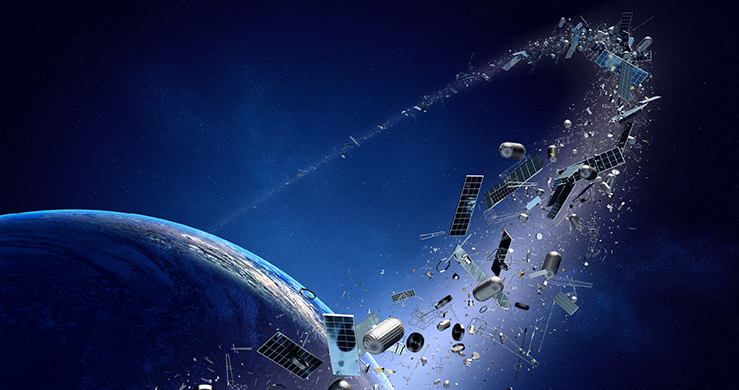
Operational services
ESA’s Space Debris Office provides operational services in support of planned and ongoing missions within ESA and to third parties.
These services comprise:
Forecasts, prediction refinements and avoidance manoeuvre recommendations
Prediction of re-entry time and location, forecast of spacecraft disintegration and demise and on-ground risk assessment
Assistance to ensure a mission is compliant with space debris mitigation guidelines
Provision of training on all space debris matters and on ESA tools supporting the mitigation of space debris in spacecraft design and operation
Space Debris User Portal
Visit our Space Debris User Portal to find out more about ESA’s Space Debris Software. The portal serves as entry gate for software licence applications and for the retrieval of the software. Registered users may retrieve updated data and software patches and may raise support requests.
